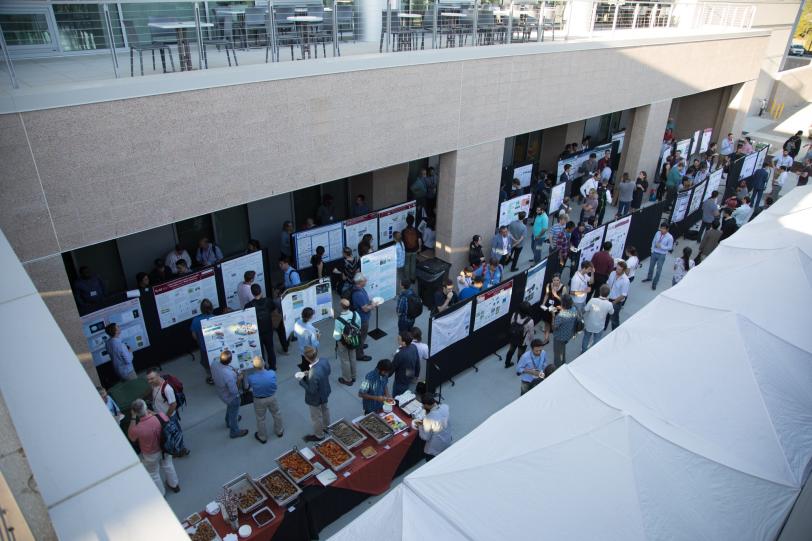Slideshow: 2017 SSRL/LCLS Users’ Meeting
About 400 people attended the annual conference and workshops for scientists who conduct experiments at SLAC’s light sources.
By Dawn Harmer and Amanda Solliday
This year’s SSRL/LCLS Annual Users' Meeting brought together nearly 400 researchers who conduct experiments at Stanford Synchrotron Radiation Lightsource (SSRL) and the Linac Coherent Light Source (LCLS), including 90 participants in the concurrent High-Power Laser workshop.The meeting was held at the Department of Energy’s SLAC National Accelerator Laboratory Sept. 27-29.

As DOE Office of Science User Facilities, SSRL and LCLS are open to scientists around the world for experiments that explore matter and processes with extremely bright X-rays.
The meeting consists of presentations and workshops where participants share and discuss facility capabilities and the latest areas of research. The Melvin P. Klein Scientific Development Award, Farrel W. Lytle Award, William E. and Diane M. Spicer Young Investigator Award and LCLS Young Investigator Award were presented at the meeting, as well as the second annual Joe Wong Outstanding Poster Awards.
The 2017 meeting organizers were Christoph Bostedt of Argonne National Laboratory, who is vice chair of the LCLS Users’ Executive Committee; David Bushnell of Stanford University, the SSRL Users’ Executive Committie vice chair; and SLAC scientists Axel Brachmann, Sergio Carbajo and Dimosthenis Sokaras.
Contact
For questions or comments, contact the SLAC Office of Communications at communications@slac.stanford.edu.






